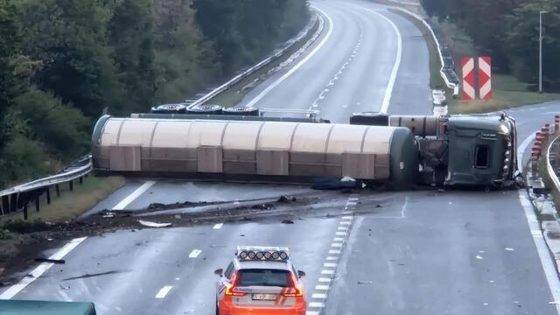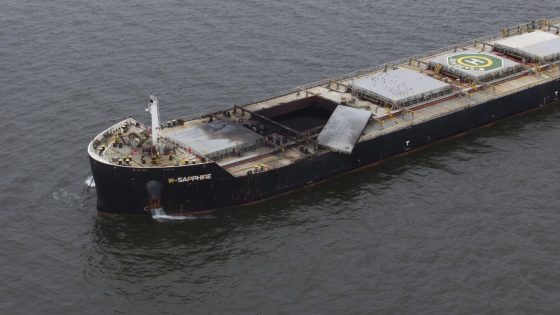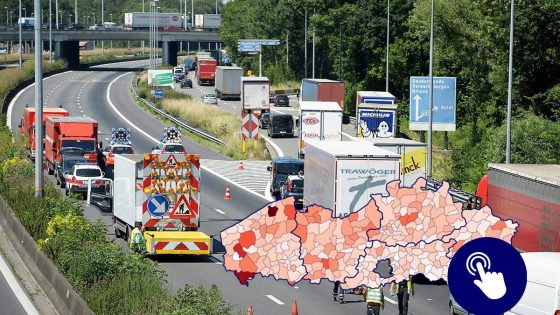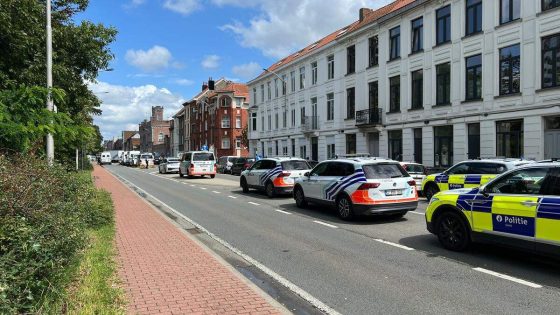A major traffic disruption occurred on the E313 highway in Diepenbeek on Friday morning when a tank truck overturned, blocking the road towards Lummen. The incident involved a German tractor unit with a Belgian trailer, and the highway was closed for several hours as emergency services responded. At around 5:30 AM, firefighters were called to rescue the driver, who suffered neck injuries and was taken to hospital.
- Tankwagen kantelt en blokkeert E313 snelweg
- Brandweer bevrijdt bestuurder met nekletsel
- Vrachtwagen dwars over snelweg richting Lummen
- Hamse sleepdienst trekt vrachtwagen rond 10 uur
- Calciumcarbonaat inhoud veroorzaakt geen gevaar
- Weg weer open na takeling rond middag
Despite the severity of the accident, the driver’s condition was reported as stable later that morning. The overturned truck caused significant delays as it lay across the highway, forcing traffic to exit at Diepenbeek’s exit 30 and follow a detour. Fortunately, the timing coincided with the summer construction holiday, resulting in lighter traffic and fewer congestion issues than expected.
The recovery operation was completed by 10 AM, when a local towing service managed to upright the tanker without causing damage to its contents. This incident, reported at 2025-08-01 18:15:00, raises questions about road safety and the handling of hazardous materials on Belgian highways. What measures can prevent such accidents, and how can traffic flow be better managed during emergencies?
How did the authorities manage to clear the highway efficiently despite the complexity of the accident? Key factors include:
- Prompt response by firefighters and rescue teams to free the driver safely
- Effective use of a local towing service to upright the tanker without leakage
- Traffic detours implemented swiftly, minimizing congestion due to lower vehicle volumes
- Clear communication from the road police about the non-hazardous nature of the cargo (calcium carbonate)
As Belgium continues to improve road safety and traffic management, drivers are encouraged to stay informed about detours and exercise caution near construction zones and accident sites. Could enhanced monitoring and quicker incident clearance become the new standard to avoid similar disruptions in the future?

































